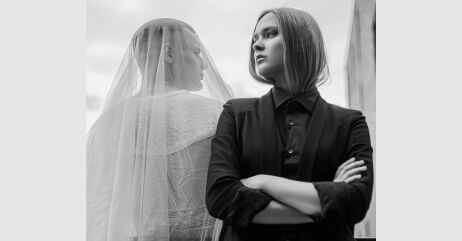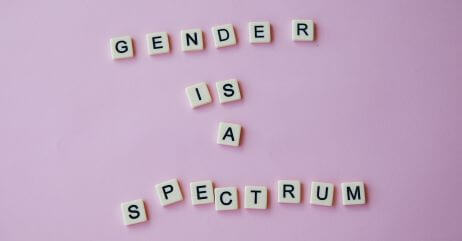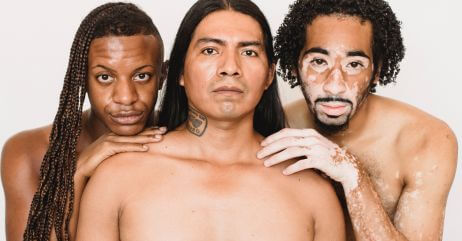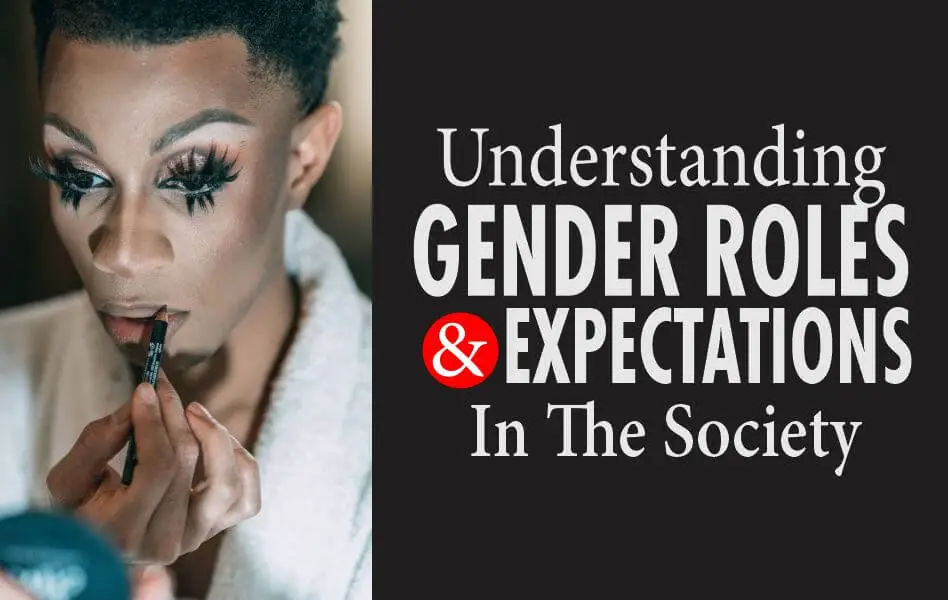Last updated on January 25th, 2024 at 08:28 am
Uncover the complexities of gender roles and expectations in society. Gain a deeper understanding of how societal norms shape our perceptions and behaviours.
From the moment we are born, we are assigned a gender and expected to conform to certain societal norms and expectations based on that gender.
These expectations can range from the clothes we wear to the jobs we pursue, and they can have a profound impact on our personal and professional lives.
However, as society continues to evolve and become more inclusive, it is important to examine and challenge these societal roles and expectations.
By understanding the ways in which gender roles and expectations in society are constructed and perpetuated, we can work towards creating a more equitable and just society for all individuals, regardless of their gender identity.
In this article, we are going to learn what gender role is and the expectations the society puts on it.
Table of Contents
- What are Gender Roles and Expectations in Society?
- Common Gender Roles in Society
- Historical Perspectives of Gender Roles
- Intersectionality and Gender
- Impact Of Gender Roles on Society
- Gender and Power
- Gender in the Workplace
- Gender, Media and Popular Culture
- What are Four Examples of Gender Roles?
- What Influences Gender Roles in Today’s Society?
- Ongoing Changes in Gender Role Expectations
- Conclusion
What are Gender Roles and Expectations in Society?

Gender roles are often stereotyped and define how males and females should behave, what professions are suitable for them, what their roles and responsibilities within the family should be, and how they should interact with other people.
These expectations can also perpetuate gender inequalities, leading to unequal access to resources, power, and opportunities.
The roles of genders and their expectations in society are set of expectations, behaviors, and responsibilities that are culturally assigned to individuals based on whether they are men or women.
Related: Reconciling Feminism And Biblical Gender Roles
These roles can vary based on cultural and historical contexts and can influence behaviours, relationships, and opportunities within society.
Gender expectations can be rigid and limiting, causing you to conform to societal norms and limiting your individual expression and possibilities.
These roles and expectations determine how you should act, dress, and interact with others, often reinforcing traditional notions of what it means to be a man, (masculinity) and what it means to be a woman (femininity).
Common Gender Roles in Society
Below are some common roles of genders in society:
Traditional Masculine Roles
The societal expectations of gender roles are deeply rooted in the dichotomy between masculinity and femininity.
Masculinity is often associated with traits such as strength, assertiveness, and dominance. Men are expected to be stoic, competitive, and focused on professional success.
Traditional masculine roles have emphasized traits such as strength, assertiveness, and being the primary breadwinner.
Traditional Feminine Roles
On the other hand, femininity is associated with traits like nurturing, empathy, and submissiveness.
Women are often expected to prioritize relationships, exhibit emotional sensitivity, and excel in domestic duties.
However, these narrow definitions of masculinity overlook the diverse range of expressions and identities that exist within individuals.
Traditional feminine roles have typically emphasized nurturing, caregiving, and domestic responsibilities.
Women have often been expected to prioritize family and relationships, engage in activities related to homemaking, and display traits such as empathy and emotional sensitivity.
Occupational Roles
Certain occupations and industries have been traditionally associated with specific genders.
For example, men have been overrepresented in fields such as engineering, technology, and manual labour, while women have been overrepresented in areas like teaching, nursing, and caregiving.
Parental Roles
Traditional gender roles have often assigned primary caregiving responsibilities to women, including child-rearing, nurturing, and household management.
Men, on the other hand, have typically been assigned the role of the provider and have been expected to take on a secondary role in parenting.
Social Roles
Gender expectations and roles also influence social expectations and behavior. For example, men have been encouraged to be assertive, competitive, and self-reliant, while women have been expected to be cooperative, nurturing, and relationship-oriented.
Related: The Power In Female And Male Submission
Historical Perspectives of Gender Roles

Throughout history, roles of genders and expectations in society have undergone significant transformations, reflecting the social, economic, and cultural contexts of different eras.
In ancient societies, these roles and expectations in society were often determined by biological differences and reinforced through religious and cultural beliefs.
Men were typically assigned roles as providers and warriors, while women were expected to focus on domestic duties and child-rearing.
However, as societies progressed, so did the complexity of the roles.
The rise of agrarian societies led to the emergence of more defined gender divisions, with men primarily engaged in farming and women tending to household tasks.
In feudal systems, gender roles became more stratified, with men occupying positions of power and women being subordinate.
With the advent of the Industrial Revolution, gender roles experienced a significant shift as economic activities moved from home to factories.
Men took up industrial jobs, while women were often relegated to domestic work.
This division created distinct gender spheres, reinforcing stereotypes about men’s and women’s roles.
Patriarchal Society
Patriarchy, a system in which men hold primary power and authority, has been a dominant feature in many societies throughout history.
This societal structure has perpetuated gender inequalities, with men being privileged and women experiencing various forms of oppression and subjugation.
Patriarchal systems have shaped the roles of genders by enforcing male dominance and female subordination.
Men were traditionally seen as the breadwinners and decision-makers, while women were expected to be submissive, nurturing, and confined to the private sphere.
These societal norms limited women’s opportunities for education, political participation, and economic independence.
The impact of patriarchy extended beyond the household and permeated all aspects of society, including politics, law, and culture.
It entrenched gender hierarchies, perpetuating the notion that men were inherently superior to women and reinforcing harmful stereotypes and expectations.
Related: Reconciling Feminism and Femininity
Women’s Suffrage Movement
The women’s suffrage movement emerged in the late 19th and early 20th centuries as a response to the inequality and disenfranchisement faced by women.
It was a significant milestone in challenging traditional roles of genders and advocating for women’s rights.
The suffrage movement aimed to secure women’s right to vote, recognizing that political power was instrumental in effecting broader social changes.
Suffragettes, women who championed the cause, organized protests, marches, and campaigns to challenge the patriarchal barriers that denied women their fundamental rights.
The efforts of suffragettes culminated in significant achievements, with countries granting women suffrage rights over time.
These victories not only granted women political agency but also catalyzed broader social changes, challenging traditional gender roles and expanding opportunities for women in education, employment, and public life.
The women’s suffrage movement paved the way for subsequent feminist movements, sparking ongoing discussions and activism to dismantle gender inequalities and redefine gender roles and expectations in society.
See a comprehensive article on the origins of gender stereotypes.
Intersectionality and Gender

Intersectionality is a concept that has gained a lot of attention in recent years within the field of gender studies.
It is a term that represents the interconnectedness of social categories, such as gender, race, sexuality, and class, and how they all intersect to shape one’s individual experience.
Intersectionality is all about understanding multiple identities and how they interact with each other to create unique experiences of oppression and privilege.
Gender is one of the key categories that is often discussed in relation to intersectionality.
Historically, gender has been a major factor in shaping social inequality and marginalization, particularly for women.
However, the experiences of women are not the same across the board. For example, a white woman in the United States may face gender-based discrimination, but she also has privilege based on her race.
Similarly, a Black woman may face both racism and sexism, which creates a unique experience of marginalization that is different from that of white women or Black men.
Importance of Intersectionality
The concept of intersectionality has helped to shed light on the complex interactions between multiple social categories and how they shape experiences of oppression and privilege.
- For example, one important aspect of intersectionality is how it helps us to understand the different experiences of gender-based violence that women face based on factors such as race, class, sexuality, and disability. Intersectionality helps to highlight the fact that gender-based violence affects women in different ways, and that different women may require different forms of support and intervention.
- Another important area of intersectionality and gender is in the realm of work and employment. Intersectionality has highlighted the fact that gender-based discrimination in the workplace does not affect all women in the same way. For example, Black women may face both racial and gender-based discrimination, which can make it much more difficult for them to secure and maintain employment.
- Furthermore, intersectionality has helped to highlight the fact that gender is a complex and multifaceted category that interacts with other social categories in complex ways. For instance, queer and trans individuals may face additional challenges related to gender because of societal norms around sexual orientation and gender expression.
Recognizing the intersections of gender and other social categories has helped to create a more nuanced and inclusive understanding of the experiences of marginalized communities.
Impact Of Gender Roles on Society

The impact of male and female roles on society is far-reaching and multifaceted.
Firstly, these expectations perpetuate harmful stereotypes and reinforce inequalities.
Women are often subjected to systemic discrimination, limiting their access to opportunities and hindering their professional growth.
Men, too, bear the weight of societal expectations, facing pressure to conform to rigid notions of masculinity that may compromise their mental health and emotional well-being.
Gender expectations can also lead to strained relationships, as individuals try to fit into predetermined molds rather than embrace their authentic selves.
Historically, gender roles were rigid and clearly defined. Men were expected to be the breadwinners, to be tough, aggressive, and dominant while women were supposed to be the caretakers, submissive, gentle and nurturing.
These rigid gender expectations often led to discrimination, sexism, and gender inequality.
Today, while gender roles have become less rigid than before, they still play a significant role in society’s attitudes towards men and women.
For instance, women are still underrepresented in many fields, with men typically dominating leadership positions in most professions.
Additionally, people who do not conform to societal gender norms may face discrimination, harassment, or violence.
For example, transgender people often face discrimination from society, which leads to job loss, homelessness, and violence.
Gender stereotypes can also affect individuals’ mental health and self-esteem. The expectation that men must be strong, rational, and unemotional can lead to the suppression of emotions and this can be damaging for men’s mental health.
Women are often subjected to unrealistic beauty standards and judged based on appearance, which can lead to unhealthy body image.
Gender norms also impact relationships, with men often expected to initiate and organize dates and relationships leading to toxic masculinity.
Society often treats single women and men differently, with “spinsters” viewed negatively and single men celebrated for their independence.
See a comprehensive article on the impact of gender roles on individuals.
Gender and Power
Gender and power is a complex and multifaceted topic that explores the relationship between gender and the distribution of power in society.
It encompasses a range of issues, including power dynamics, discrimination, and violence, that are shaped by gender norms and expectations.
Analysis of Power Dynamics in Relation to Gender
Power dynamics in relation to gender refer to the ways in which gender shapes the distribution of power in society.
This includes the ways in which gender influences access to resources, decision-making processes, and social status.
Gender-based power dynamics are often characterized by a patriarchal system in which men hold more power and privilege than women.
This can manifest in various ways, such as in the workplace, politics, and social interactions.
Discussion on Gender-based Discrimination and Inequalities
Gender-based discrimination refers to the unfair treatment of individuals based on their gender.
This can take many forms, including unequal pay, limited access to education and job opportunities, and gender-based stereotypes.
Gender inequalities are often perpetuated by societal norms and expectations that reinforce gender roles and limit opportunities for individuals who do not conform to these roles.
Examination of Gender-based Violence and its Social Implications
Gender-based violence refers to any form of violence that is directed at an individual based on their gender.
This can include physical, sexual, and emotional violence, as well as harassment and intimidation.
Gender-based violence is often rooted in power imbalances and is used as a means of control and domination.
The social implications of gender-based violence are far-reaching and can include physical and psychological harm, as well as social and economic consequences.
Gender in the Workplace
Gender disparities in the workplace have been a persistent issue for decades.
Despite progress in recent years, women continue to face significant challenges in various professional fields.
From the gender pay gap to workplace discrimination, there are many obstacles that women must overcome to achieve equality in the workplace.
In this blog post, we will explore these issues and discuss strategies for achieving gender equality in the workplace.
Analysis of Gender Disparities in Various Professional Fields
Gender disparities in the workplace are evident across various professional fields.
For example, women are underrepresented in STEM fields, with only 28% of STEM jobs held by women.
Similarly, women are underrepresented in leadership positions, with only 7% of Fortune 500 companies led by women.
These disparities are often attributed to societal norms and expectations that reinforce gender roles and limit opportunities for women.
Exploration of Workplace Discrimination and the Gender Pay Gap
Workplace discrimination is a significant barrier to gender equality in the workplace. Women often face discrimination in hiring, promotion, and pay.
The gender pay gap, in particular, is a persistent issue, with women earning only 82 cents for every dollar earned by men.
The gender pay gap is even more pronounced for women of color, as Black women earn only 63 cents and Latina women earn only 55 cents for every dollar earned by white women, non-Hispanic men.
Discussion on Strategies for Achieving Gender Equality in the Workplace
Achieving gender equality in the workplace requires a multifaceted approach. One strategy is to promote diversity and inclusion in hiring and promotion practices.
This can include implementing blind hiring practices, where candidate information such as name and gender are removed from resumes to reduce bias.
Another strategy is to address the gender pay gap by implementing pay transparency policies and conducting regular pay audits to ensure that women are paid fairly.
Additionally, organizations can provide training and education on unconscious bias and gender stereotypes to promote a more inclusive workplace culture.
This can include workshops and seminars on topics such as gender equity, diversity, and inclusion.
Finally, it is essential to have strong policies in place to address workplace discrimination and harassment.
This can include clear reporting procedures, investigations, and consequences for those who engage in discriminatory behavior.
Related: Balancing Biblical Gender Roles In Modern Society
Gender, Media and Popular Culture
Media and popular culture play a significant role in shaping our perceptions of gender.
From movies and TV shows to advertising and social media, the images and messages we consume can have a profound impact on our understanding of gender roles and expectations.
In this section, we will examine how media and popular culture shape gender perceptions, analyze gender representation in various forms of media, and discuss the impact of media on shaping gender norms and stereotypes.
Examination of How Media and Popular Culture Shape Gender Perceptions
Media and popular culture are powerful tools for shaping our perceptions of gender. They can reinforce gender stereotypes and norms or challenge them.
For example, media can perpetuate the idea that women are emotional and nurturing, while men are strong and rational.
Alternatively, media can challenge these stereotypes by portraying women as strong and independent and men as emotional and vulnerable.
Analysis of Gender Representation in Movies, TV Shows, and Advertising
Gender representation in movies, TV shows, and advertising is often problematic.
Women are often portrayed in stereotypical roles, such as the damsel in distress or the love interest, while men are portrayed as the hero or the provider.
Additionally, women are often sexualized and objectified in advertising, while men are portrayed as powerful and dominant.
Discussion on the Impact of Media on Shaping Gender Norms and Stereotypes
The impact of media on shaping gender norms and stereotypes is significant.
Media can reinforce harmful gender stereotypes and perpetuate inequality, or it can challenge these stereotypes and promote gender equality.
For example, media that portrays women in leadership roles can challenge the stereotype that women are not suited for leadership positions.
Similarly, media that portrays men as caregivers can challenge the stereotype that caregiving is a woman’s role.
What are Four Examples of Gender Roles?
Here are four examples of gender roles:
- Breadwinner: Historically, the role of the breadwinner has been associated with men. Men were expected to be the primary earners and providers for their families, taking on jobs that offered financial stability and supporting their dependents.
- Homemaker: The role of the homemaker has traditionally been associated with women. Women were expected to take care of household chores, such as cooking, cleaning, and raising children. The homemaker role often involved nurturing and creating a comfortable and supportive environment for the family.
- Caregiver: Women have been commonly assigned the role of caregiver, not only in terms of raising children but also in providing emotional support and care for family members. This role involves offering physical and emotional support, tending to the needs of others, and maintaining familial relationships.
- Protector: The role of protector has often been associated with men. Men have traditionally been seen as responsible for ensuring the safety and security of their families and communities. This role may involve physical protection, defending against potential threats, and assuming leadership in times of danger.
What Influences Gender Roles in Today’s Society?
- Cultural and Social Norms: Cultural and social norms play a significant role in shaping gender expectations. These norms are learned and transmitted through various social institutions, such as family, education, religion, and media. They dictate what is considered appropriate behavior and expectations for individuals based on their gender.
- Media and Popular Culture: Media, including television shows, movies, advertisements, and social media, has a powerful influence on shaping gender norms. Media often portrays and reinforces traditional stereotypes and expectations of masculinity and femininity. These portrayals can shape perceptions and influence individuals’ understanding of what is considered acceptable or expected behaviour based on their gender.
- Education and Upbringing: Education and upbringing play a crucial role in socializing individuals into gender expectations. Families, schools, and other educational institutions often reinforce gendered expectations through the teaching of gender-specific behaviors, activities, and responsibilities. Children learn what is considered appropriate for their gender through observation, instruction, and reinforcement.
- Economic Factors: Economic factors, such as the division of labour and occupational segregation, also influence gender roles. Certain occupations and industries continue to be dominated by one gender, contributing to the perpetuation of gender stereotypes and expectations. Economic inequalities and disparities can reinforce traditional gender roles and limit opportunities for individuals to challenge these roles.
- Political and Legal Factors: Political and legal systems can both perpetuate and challenge gender norms and expectations. Laws and policies related to employment, family, and social welfare can either reinforce traditional gender expectations or promote gender equality. Political movements and activism also play a role in challenging gender roles and advocating for equal rights and opportunities.
- Intersectionality: Roles assigned to genders are also influenced by intersectionality, which recognizes that individuals experience gender in conjunction with other aspects of their identity, such as race, ethnicity, class, sexuality, and disability. These intersecting identities can influence the expectations and experiences individuals face in relation to gender roles.
Ongoing Changes in Gender Role Expectations
Society’s perception of gender roles is undergoing a remarkable transformation, challenging long-standing stereotypes and embracing more inclusive and fluid understandings of gender.
As we progress towards a more enlightened and equitable society, emerging ideas are reshaping our perception of gender expectations.
Emerging Ideas of Gender Roles
In recent years, society has witnessed the emergence of progressive ideas that challenge the traditional binary view of gender norms.
The concept of gender as a spectrum acknowledges the diversity and fluidity of gender identities, encompassing a range of expressions beyond the traditional categories of male and female.
This inclusive perspective recognizes that gender is not solely determined by biological sex, but rather a complex interplay of individual identity, self-expression, and personal experiences.
Moreover, the understanding of these roles is shifting towards a more egalitarian approach.
Rather than prescribing rigid expectations based on gender, society is embracing the idea that individuals should be free to pursue their passions, interests, and goals without being confined by societal norms.
This shift opens up space for individuals to explore and define their own unique paths, unburdened by the constraints of traditional gender norms.
Positive Impacts of Breaking Gender Roles
Breaking traditional gender expectations brings forth a multitude of positive impacts for individuals and society as a whole.
Firstly, it encourages greater individual freedom and self-expression.
When individuals are not limited by predefined gender expectations, they can explore their authentic selves, embrace their unique talents and interests, and lead fulfilling lives that align with their true identities.
Moreover, breaking gender expectations paves the way for increased equality and inclusivity.
By dismantling gender-based barriers and biases, opportunities become more accessible to all individuals, regardless of their gender identity.
It allows for diverse perspectives and talents to be recognized and valued, creating a richer and more vibrant society.
Additionally, breaking gender roles promotes healthier relationships.
When individuals are not confined by stereotypical expectations, they can form relationships based on mutual respect, understanding, and shared responsibilities.
It allows for the cultivation of equal partnerships, where both individuals can contribute and thrive in all aspects of life, be it a career, household duties, or raising a family.
Future of Gender Role Expectations
The future of gender role expectations holds promise for continued progress towards equality and inclusivity.
As society becomes more aware of the limitations imposed by traditional gender roles, efforts to challenge and redefine them are gaining momentum.
The future holds the potential for further dismantling of gender stereotypes, creating a society that values and celebrates individuality, regardless of gender.
In this future, we can envision a society where individuals are free to express themselves authentically, pursue their passions without judgment, and have equal access to opportunities.
Gender role expectations will be rooted in respect for individual autonomy, recognizing that every person’s journey is unique and should be honored.
Furthermore, education and awareness will play a crucial role in shaping the future of gender role expectations.
By promoting comprehensive sex education, fostering open dialogue, and challenging harmful stereotypes from a young age, we can empower the next generation to embrace equality, respect, and diversity.
Conclusion
Understanding gender roles and expectations in society is crucial for fostering a more inclusive and equitable world.
Throughout this discussion, we explored the societal expectations and the ongoing changes that challenge traditional norms.
We recognized that gender roles are not fixed or universal, but rather social constructs that can limit individual expression and perpetuate inequalities.
It is important to emphasize that understanding gender expectations and roles is not only about recognizing the diversity of gender identities and expressions but also about dismantling harmful stereotypes and promoting equal opportunities.
By breaking free from rigid gender expectations, we can create space for individuals to authentically express themselves, pursue their passions, and contribute to society without discrimination.
References:
- Gender Identity & Roles | Feminine Traits & Stereotypes
- Gender Roles in Modern Society
- Meaning and Examples of Gender Roles in Society
- Gender Roles Can Create a Lifelong Cycle of Inequality
Pyo Merez (PsyD) is a distinguished adolescent and adult psychologist at the forefront of mental health advocacy.
With expertise in cognitive and developmental psychology, focusing on social relationships, cultural contexts, and individual differences, Pyo has dedicated his career to empowering adolescents and adults.
As a sought-after speaker and panelist, Pyo shares invaluable insights on issues affecting young people, contributing to a deeper understanding of mental health and well-being in today's society.



Unless we end male chauvinism then the gender roles will be remain to be traditional
You are very correct Lydiah. Male chauvinism is driven by the traditional male ego, and it needs continuous awareness to not let the new generation pick it up.